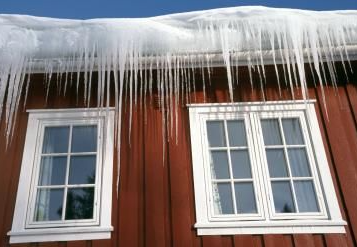 Walls of the knee (side walls that support attic rafters)
Walls of the knee (side walls that support attic rafters) Opening/Attic hatch
Holes for wiring (cable TV, electrical outlets, phone lines)
Vents for plumbing
Recessed lights and the room surrounding these lights
Ducts or furnace flues
Rim basement joists (the meeting point of the foundation and wood framing)
First, to help minimize drafts and have an impact on your energy bills, you'll need to find air leaks, which you can do by following these tips.
To complement your visual examination, you may also conduct a basic test. The DOE explains different procedures, but includes the following steps to carry out a do-it-yourself smoke test:
Choose a cool and windy day and turn off all appliances, including the furnace, water heater, clothes dryer and bathroom fans, that cause air disruptions or have exhaust fans.
Shut down all windows, doors on the outside and fireplace flues.
Light a stick of incense carefully and keep it near any possible air leakage points (see the common points of air leakage list above).
You have an air leak if the smoke starts going unsteadily back and forth, or if it's sucked out of the room or blown into it.
Collect your supplies
Now that you've discovered air leaks in your home, it's important to get to know the tools of the trade. Caulk and spray foam are designed to help seal gaps like window frames in stationary materials and fixtures. Weatherstripping is intended for objects such as doors and operable windows that change (between the frames and sashes). Depending on the project, you will also need a few specialized products, such as high temperature caulk, flashing metal and reflective foils.
Basements and Spaces of Crawl
From there, addressing the basement and crawl room, where sealing air leaks may help avoid cold floors and reduce drafts from below, could be your next savings opportunity. The use of spray foam or caulk to seal cracks and holes in the basement walls, ceiling or floor may be part of a basement air sealing project. You will also want to seal at each end of the house along the distance between the sill plate and the foundation, and at the bottom and top of each rim joist (where cement walls meet the wood frame).
Doors and Windows
While leaks around doors and windows will probably result in the most visible drafts, sealing them usually has the least effect on your energy usage. However, since these areas are easily accessible and the solutions appear to be straightforward, they provide an opportunity for a simple do-it-yourself job that can lead to the minimization of apparent unpleasant drafts. Rolling self-adhesive weather stripping (felt, plastic, rubber or silicone) down the side of a window or installing a door sweep to help seal the gap between the door's bottom and the threshold can be part of a door or window air sealing project.
The Attics
Your attic stands at the top of the list. Do not think about discovering all the little holes and cracks. Second, concentrate on sealing up the biggest gaps, because that's where you will realize one of the biggest savings in electricity. A project for attic air sealing could involve making fiberglass insulation pouches to plug open stud cavities and gaps behind knee walls.